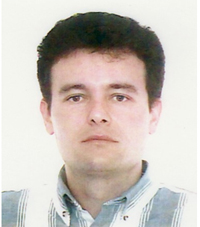
Nume: IONIŢĂ Adrian
Tema: Structuri de putere reflectate în cultura materială şi în izvoarele aferente
Partener: Academia Română, Institutul de Arheologie Vasile Pârvan, Bucureşti
Proiect: Food and status on the Lower Danube between the Xth and XIVth Centuries
Date de contact
aionita67@yahoo.com
Curriculum Vitae
Etudes
- 1999 – 2003: Faculty of Biology, Department of Systems Ecology, University of Bucharest;
- 2003 – 2005: Master Degree in Systems Ecology and Sustainable Development, Faculty of Biology, University of Bucharest;
- 2004 – 2008: PhD student in Prehistory, Valahia State University of Târgovişte, Faculty of Humanities.
Professional activity
- 2008 – Present: Scientific researcher at the Archeological Institute “Vasile Pârvan” of the Romanian Academy, Bucharest.
- 2004 – 2008: PhD student at the Valahia State University of Târgovişte, Faculty of Humanities.
- 2003 – 2006: research assistant, Institute of Archaeology „Vasile Pârvan”, Bucharest.
- June – September, 2003: research assistant, Speleological Institute “Emil Racoviţă” of the Romanian Academy, Bucharest.
Scholarships:
2007 – Socrates-Erasmus – Institut de Préhistoire et de Géologie du Quaternaire, Université Bordeaux 1, France.
Archaeological excavations:
- Borduşani – Popină, Ialomiţa county (2001, 2002, 2006, 2009) - Eneolithic;
- Bucşani – Pod, Giurgiu county (2002, 2004) - Eneolithic;
- Hârşova – Tell, Constanţa county (2003, 2004) - Eneolithic;
- Rotbav, Brasov county (2005) – Bronze Age;
- Piatra Neamt – Poiana Cireşului, Neamţ county (2005, 2006, 2007) – Upper Palaeolithic;
- Jonzac, Chez-Pinaud, dep. Charente-Maritime, France (2006) – Middle Palaeolithic;
- Bucsani - Scoală – Giurgiu county (2009) – Medieval necropolis;
- Iepuresti, Giurgiu county (2009, 2010) – Eneolithic, Bronze Age;
- Nufăru, Tulcea county (2009, 2010) – Medieval (Xth-XIVth Centuries).
Foreign languages:
English, French
Food and status on the Lower Danube between the Xth and XIVth Centuries
Beyond subsistence, food relates to cultural identity, and also functions as a divider for economic and social categories, being an indicator of hierarchy and status. Zooarchaeological data from several sites are used to reveal different behaviours related to these issues.
Selection of publications:
Books
- 2008, Economia comunitătilor paleolitice de pe Valea Bistritei. Perspectivă arheozoologică / The economy of Palaeolithic communities from Bistrita Valley. A zooarchaeological perspective, Ed. Cetatea de Scaun, Târgoviste.
Studies
- 2006, The 2001 campaign in the Early Iron Age settlement at Popeşti – a zooarchaeological analysis, Dacia, N.S., XLVIII – XLIX, 2004 – 2005, Editura Academiei Române, Bucureşti, pag. 71-75.
- Marin Cârciumaru, Mircea Anghelinu, Leif Steguweit, Géraldine Lucas, Loredana Niţă, Laure Fontana, Alexis Brugère, Ulrich Hambach, Monica Mărgărit, Valentin Dumitraşcu, Marian Cosac, Florin Dumitru, Ovidiu Cârstina, 2006The Upper Paleolithic Site from Poiana Cireşului, Piatra Neamţ (North-Eastern Romania). Recent Results, Archaeologisches Korespondenzblatt, 36, pag. 319 – 331.
- 2009, Resturile faunistice de la Murfatlar-Basarabi / (Faunal remains from Murfatlar-Basarabi), Materiale şi Cercetări Arheologice, serie nouă, V, Editura Academiei Române, Bucureşti, pag. 189-192.
Studies in collective volumes:
- Valentin Dumitraşcu, Corina Gheorghiu, 2003, The use of palaeoecology in the process of ecological reconstruction: archaeological site Borduşani-Popină from Balta Ialomiţei wetland, în “Archaeological Pluridisciplinary Researches at Borduşani-Popină”, Ed. Cetatea de Scaun, Târgovişte, pag. 173 – 184.
Coordinated Projects:
- Project director - Consideraţii paleoecologice şi economia comunităţilor paleolitice de pe Valea Bistriţei în contextul paleoliticului superior din România / Palaeoecological considerations and the economy of the Paleolithic communities from Bistrita Valley in the context of the Romanian Upper Palaeolithic, CNCSIS, TD (Projects for young PhD students), 2007 – 2008.